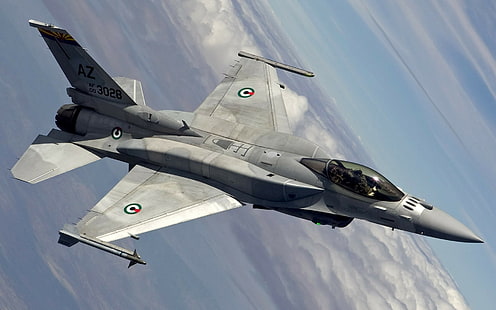
For the first time over the last few months, pilots from Ukraine made their first sorties in American-made F-16 Fighting Falcon jets, marking a significant improvement in air capabilities.

This milestone was achieved after a rigorous effort by Kyiv to obtain transfers of the fourth-generation aircraft, sought from several European countries, and also the go-ahead from the U.S. in August 2023.

The F-16s have proven themselves already. In one major Russian cruise missile and drone attack on Ukraine, the Ukrainian F-16s intercepted several cruise missiles to take part in the effort by Ukraine’s Air Defense.

However, this successful intercept has been blemished by an alleged friendly fire incident on Lt. Col. Oleksiy “Moonfish” Mes, who he got shot down after reeling in a third threat.

Initial reports pointed to friendly fire, but U.S. officials now suspect mechanical failure or human error might have been the culprit.

The country now has about half a dozen operational F-16s, which the European countries promised to send more of later.

Altogether, there are around a dozen pilots qualified enough to fly those, and the training is going on with help from the British, French, and American militaries.

The three core missions that the F-16s will have are intercepting Russian missiles and drones, suppressing enemy air defense systems, and striking Russian troop positions and ammunition depots with air-to-ground missiles.

Federico Borsari of the Center for European Policy Analysis in Washington observes that these jets “will be able to affect some of the dynamics of the war.”

However, F-16s come with several challenges. Marina Miron from the Defense Studies Department at King’s College London notes that the approximately nine-month training for Ukrainian pilots is very much a crash course by comparison to the usual three-year training that Western pilots get.

This will result in limitations on their performance. The second reality about F-16s is that they require a huge support personnel complement; this includes skilled maintenance engineers, munitions loaders, intelligence analysts, among others, and an emergency crew.

It also must establish an infrastructure of radar stations, reinforced hangars, a spare parts reserve, and refueling systems.

It must have high-quality airfields because the air intake of the F-16 is relatively close to the tarmac and could suck debris and dirt into the engine.

What an image: Russian President Vladimir Putin would love the thought of destroying F-16s from NATO countries. Kremlin spokesperson Dmitry Peskov said that there is no such thing as a “magic pill” when it comes to a change in the conflict situation, regarding the F-16s. Destruction probably through long-range missiles on the ground targeting Ukraine’s scant and unsuitable airfields.

However, as Ukrainian aviation expert Anatolii Khrapchynskyi says, despite all this difficulty, F-16s will still increase the capabilities of the Ukrainian Air Force in protecting the airspace of the country from Russian attacks and raise the range at which Ukraine can strike strategic targets in Russia.

It is a huge blow to the beleaguered air defenses of Ukraine as the F-16 is lost. President Volodymyr Zelensky confirmed that jets were used to destroy missiles and drones launched by Russia. It was the first time any Ukrainian official confirmed that the jets were in use in combat.

However, with these advanced aircraft integrated into Ukraine’s operations, the war’s real effects of the F-16s are to be seen.